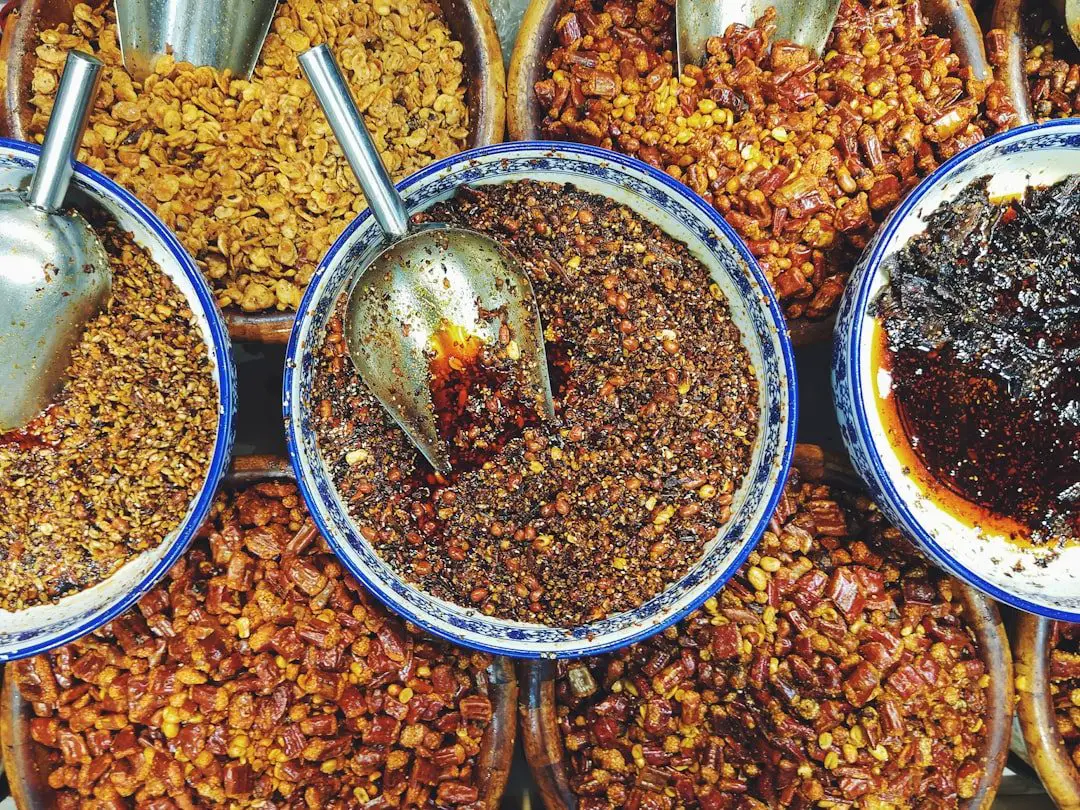
Herbs and seasoning have been an integral part of cooking for centuries. From ancient civilizations to modern-day kitchens, these flavorful additions have played a crucial role in enhancing the taste and aroma of dishes. The history of herbs and seasoning dates back to ancient times when they were used for medicinal purposes as well as for culinary purposes.
In ancient Egypt, herbs such as coriander, cumin, and garlic were used for their medicinal properties. The Greeks and Romans also recognized the value of herbs and seasoning in cooking, with famous figures like Hippocrates and Galen advocating for their use in medicine. As trade routes expanded, herbs and seasoning from different parts of the world made their way into kitchens, adding new flavors and aromas to dishes.
The importance of herbs and seasoning in cooking cannot be overstated. They have the power to transform a simple dish into a culinary masterpiece. Whether it’s a pinch of basil in a tomato sauce or a sprinkle of cinnamon on top of a dessert, herbs and seasoning add depth, complexity, and balance to flavors. They can enhance the natural taste of ingredients, mask undesirable flavors, or create entirely new flavor profiles.
Key Takeaways
- Herbs and seasoning can add depth and complexity to your meals.
- Using herbs and seasoning can provide health benefits such as reducing inflammation and boosting immunity.
- Herbs are typically fresh or dried leaves, while seasoning is a blend of herbs and spices.
- Common herbs and seasoning used in cooking include basil, oregano, garlic, and cumin.
- Properly storing herbs and seasoning in a cool, dry place can help preserve their flavor and potency.
Health Benefits of Using Herbs and Seasoning in Your Meals
In addition to their culinary value, herbs and seasoning also offer numerous health benefits. Many herbs are rich in antioxidants, which help protect the body against free radicals and oxidative stress. For example, oregano is known to have one of the highest antioxidant levels among herbs. Its active compounds, such as rosmarinic acid and thymol, have been shown to have antimicrobial and anti-inflammatory properties.
Seasoning, on the other hand, often contains spices that have anti-inflammatory properties. Turmeric, for instance, contains curcumin, a compound that has been extensively studied for its anti-inflammatory effects. It has been shown to reduce inflammation in conditions such as arthritis and may even have potential in preventing chronic diseases like cancer and heart disease.
In addition to their antioxidant and anti-inflammatory properties, herbs and seasoning offer a range of other health benefits. For example, garlic has been shown to have antibacterial and antiviral properties, while ginger has been used for centuries to aid digestion and relieve nausea. By incorporating herbs and seasoning into your meals, you can not only enhance the flavor but also boost your overall health.
Understanding the Difference Between Herbs and Seasoning
While the terms “herbs” and “seasoning” are often used interchangeably, there is a subtle difference between the two. Herbs refer to the leaves of plants that are used for flavoring, while seasoning refers to a mixture of herbs, spices, and other ingredients that are used to enhance the taste of food.
Herbs are typically derived from the leaves of plants and can be used fresh or dried. Examples of herbs include basil, thyme, rosemary, and parsley. They are often used in cooking to add aroma, flavor, and color to dishes. Herbs can be added at different stages of cooking, depending on their intensity of flavor. For example, delicate herbs like basil are best added towards the end of cooking to preserve their fresh taste.
Seasoning, on the other hand, is a blend of herbs, spices, salt, and other ingredients that are used to enhance the flavor of food. Examples of seasoning include Italian seasoning, Cajun seasoning, and curry powder. Seasoning blends can be store-bought or homemade, allowing for customization based on personal taste preferences. They are often used as a rub or marinade for meat or as a seasoning for vegetables and grains.
The flavor and usage of herbs and seasoning can vary greatly. Herbs tend to have a more subtle flavor compared to seasoning blends, which are often more robust and complex. Herbs are commonly used in dishes like soups, stews, and sauces, while seasoning blends are often used to add flavor to grilled or roasted meats, vegetables, and rice dishes.
Common Herbs and Seasoning Used in Cooking
| Herb/Seasoning | Flavor Profile | Common Dishes | Health Benefits |
|---|---|---|---|
| Basil | Sweet, slightly peppery | Pesto, Caprese salad, tomato sauce | Anti-inflammatory, antioxidant |
| Parsley | Grassy, slightly bitter | Tabbouleh, chimichurri, garnish | Rich in vitamins A, C, and K, anti-inflammatory |
| Thyme | Earthy, slightly minty | Roast chicken, stews, soups | Antibacterial, anti-inflammatory, antioxidant |
| Rosemary | Woody, piney | Lamb, roasted potatoes, bread | Improves digestion, anti-inflammatory, antioxidant |
| Sage | Savory, slightly bitter | Stuffing, pork, pasta | Improves brain function, anti-inflammatory, antioxidant |
| Cumin | Earthy, nutty | Chili, curry, tacos | Improves digestion, anti-inflammatory, antioxidant |
| Paprika | Sweet, smoky | Goulash, deviled eggs, roasted vegetables | Rich in vitamin C, anti-inflammatory, antioxidant |
There is a wide variety of herbs and seasoning used in cooking, each with its own unique flavor profile and culinary uses. Here are some common herbs and seasoning that you may come across in recipes:
1. Basil: Basil is a versatile herb with a sweet and slightly peppery flavor. It is commonly used in Italian cuisine, particularly in tomato-based dishes like pasta sauces and pizzas.
2. Thyme: Thyme has a strong, earthy flavor that pairs well with meats, soups, and stews. It is often used in Mediterranean and French cuisine.
3. Rosemary: Rosemary has a distinct pine-like aroma and a slightly bitter flavor. It is commonly used in roasted meats, potatoes, and bread.
4. Parsley: Parsley has a fresh, grassy flavor and is often used as a garnish or added to salads, soups, and sauces.
5. Oregano: Oregano has a robust flavor with hints of citrus and pepper. It is commonly used in Italian and Greek cuisine, particularly in tomato-based dishes and on pizzas.
6. Cumin: Cumin has a warm, earthy flavor with a hint of smokiness. It is commonly used in Mexican, Indian, and Middle Eastern cuisine.
7. Paprika: Paprika is made from dried and ground red peppers and has a sweet and slightly smoky flavor. It is commonly used in Hungarian cuisine and adds color and flavor to dishes like goulash and paprikash.
8. Curry Powder: Curry powder is a blend of spices that typically includes turmeric, cumin, coriander, ginger, cinnamon, and cloves. It is commonly used in Indian and Southeast Asian cuisine to add flavor and heat to curries and other dishes.
These are just a few examples of the many herbs and seasoning available for use in cooking. Each herb and seasoning brings its own unique flavor and aroma to dishes, allowing for endless possibilities in the kitchen.
How to Properly Store and Preserve Herbs and Seasoning
Proper storage and preservation of herbs and seasoning are essential to maintain their flavor and quality. Here are some tips for storing herbs and seasoning:
1. Fresh Herbs: Fresh herbs should be stored in the refrigerator to keep them fresh for longer. To store fresh herbs, trim the stems, place them in a glass of water, cover loosely with a plastic bag, and refrigerate. Alternatively, you can wrap them in a damp paper towel and store them in a resealable bag.
2. Dried Herbs: Dried herbs should be stored in airtight containers away from heat, light, and moisture. Keep them in a cool, dark pantry or cupboard. Dried herbs can last up to a year if stored properly.
3. Seasoning Blends: Store-bought seasoning blends usually come in sealed containers, which should be kept tightly closed when not in use. Homemade seasoning blends can be stored in airtight containers in a cool, dark pantry or cupboard.
To preserve herbs and seasoning for longer periods, you can also consider freezing or drying them:
1. Freezing Herbs: Some herbs can be frozen to preserve their flavor. Wash the herbs, pat them dry, chop or leave them whole, and place them in an airtight container or freezer bag. Frozen herbs can be used directly in cooking without thawing.
2. Drying Herbs: Drying herbs is another way to preserve their flavor. Hang the herbs upside down in a well-ventilated area until they are completely dry. Once dry, remove the leaves from the stems and store them in airtight containers.
It’s important to note that herbs and seasoning can lose their flavor over time, so it’s best to use them within their recommended shelf life. To determine if herbs and seasoning have gone bad, check for any signs of mold, discoloration, or a musty smell. If they appear or smell off, it’s best to discard them.
Tips for Using Herbs and Seasoning to Enhance Flavor

Using herbs and seasoning in cooking can take your dishes to the next level. Here are some tips for using herbs and seasoning to enhance flavor:
1. Fresh vs. Dried: Fresh herbs have a more vibrant flavor compared to dried herbs. However, dried herbs are more concentrated, so you’ll need less of them in a recipe. As a general rule, use three times the amount of fresh herbs if substituting with dried herbs.
2. Timing: Different herbs have different levels of heat resistance and flavor intensity. Delicate herbs like basil and parsley are best added towards the end of cooking to preserve their fresh taste. Robust herbs like rosemary and thyme can withstand longer cooking times and are often added at the beginning.
3. Crushing or Chopping: Crushing or chopping herbs before using them can release their essential oils, intensifying their flavor. Use a mortar and pestle or a sharp knife to crush or chop the herbs just before adding them to your dish.
4. Toasting Spices: Toasting spices before using them can enhance their flavor and aroma. Heat a dry skillet over medium heat, add the spices, and toast them for a few minutes until fragrant. Be careful not to burn them.
5. Balancing Flavors: Experiment with different combinations of herbs and seasoning to find the right balance of flavors in your dishes. For example, if a dish is too acidic, adding a pinch of sugar or a sweet herb like basil can help balance the flavors.
6. Garnishing: Use fresh herbs as a garnish to add a pop of color and freshness to your dishes. Sprinkle chopped herbs on top of soups, salads, or roasted vegetables just before serving.
By using these tips, you can make the most of the flavors and aromas that herbs and seasoning have to offer.
Pairing Herbs and Seasoning with Different Types of Foods
Pairing the right herbs and seasoning with different types of foods can elevate the taste and bring out the best flavors in your dishes. Here are some examples of herbs and seasoning that pair well with different types of foods:
1. Meat: For beef, rosemary, thyme, and garlic are classic choices. For chicken, try using herbs like parsley, sage, and lemon zest. For fish, dill, tarragon, and lemon juice can add a fresh and bright flavor.
2. Vegetables: Basil, oregano, and thyme are great choices for tomatoes and other Mediterranean vegetables. For root vegetables like carrots and potatoes, try using rosemary or thyme. For leafy greens like spinach or kale, garlic and lemon juice can add depth of flavor.
3. Grains: Cumin, coriander, and turmeric are commonly used in rice dishes and grain-based salads. Dill and lemon juice can add a refreshing flavor to quinoa or couscous.
4. Soups and Stews: Bay leaves, thyme, and parsley are often used in soups and stews to add depth of flavor. Spices like cumin, paprika, and chili powder can add warmth and complexity to chili or curry-based soups.
When choosing herbs and seasoning for a dish, consider the overall flavor profile you want to achieve. Think about whether you want to enhance the natural flavors of the ingredients or create a new and unique flavor combination. Don’t be afraid to experiment and try different combinations to find what works best for you.
Experimenting with New Herbs and Seasoning in Your Cooking
One of the joys of cooking is the opportunity to try new flavors and ingredients. When it comes to herbs and seasoning, there is a vast array of options to explore. Here are some tips for experimenting with new herbs and seasoning in your cooking:
1. Start Small: When trying a new herb or seasoning, start with a small amount to see how it affects the flavor of your dish. You can always add more if needed.
2. Research Flavor Profiles: Before using a new herb or seasoning, research its flavor profile and culinary uses. This will give you an idea of what flavors it pairs well with and how it can enhance your dishes.
3. Mix and Match: Don’t be afraid to mix different herbs and seasoning together to create your own unique flavor combinations. Some unexpected pairings can result in delicious and surprising flavors.
4. Seek Inspiration: Look for recipes or dishes that use the herb or seasoning you want to try. This can give you ideas on how to incorporate it into your own cooking.
5. Ask for Recommendations: If you’re unsure about which herbs or seasoning to try, ask for recommendations from friends, family, or even your local grocer. They may have suggestions based on their own experiences.
By embracing new herbs and seasoning in your cooking, you can expand your culinary horizons and discover exciting flavors that will delight your taste buds.
Creating Your Own Signature Blend of Herbs and Seasoning
Creating your own signature blend of herbs and seasoning is a great way to personalize your dishes and add a unique touch to your cooking. Here are some tips for creating your own blend:
1. Start with a Base: Choose a base herb or seasoning that will be the foundation of your blend. This could be a herb like thyme or a seasoning like Italian seasoning.
2. Experiment with Complementary Flavors: Add other herbs or seasoning that complement the base flavor. For example, if your base is rosemary, you could add garlic powder, onion powder, and black pepper for a savory blend.
3. Consider the Intensity: Think about the intensity of the flavors you want to achieve. Some herbs and seasoning have stronger flavors than others, so adjust the quantities accordingly.
4. Test and Adjust: Mix the herbs and seasoning together and taste the blend. Adjust the quantities as needed until you achieve the desired flavor profile.
5. Use in Your Cooking: Once you’ve created your signature blend, use it in your favorite dishes to add your own personal touch. It can become your secret ingredient that sets your cooking apart.
Creating your own signature blend of herbs and seasoning allows you to tailor the flavors to your liking and experiment with different combinations. It’s a fun and creative way to make your dishes truly unique.
Elevating Your Meals with the Power of Herbs and Seasoning
Herbs and seasoning have been used in cooking for centuries, adding depth, complexity, and balance to flavors. They not only enhance the taste and aroma of dishes but also offer numerous health benefits. By understanding the difference between herbs and seasoning, exploring different flavor profiles, and experimenting with new combinations, you can elevate your meals to new heights.
Whether you’re a seasoned chef or a novice in the kitchen, cooking can be a rewarding and enjoyable experience. From experimenting with new flavors to perfecting classic recipes, there is always something new to learn and explore. Cooking allows you to express your creativity and showcase your culinary skills. It is a great way to bond with family and friends, as you can share delicious meals together. Additionally, cooking at home can be a healthier and more cost-effective alternative to eating out. So, whether you’re looking to impress others or simply nourish yourself, cooking is a skill that everyone can benefit from mastering.
If you’re a fan of herbs and seasoning, you’ll definitely want to check out this fascinating article on Flavorful Sips. It’s all about unearthing delicious discoveries and the joy of jujube. Jujube is a unique fruit that has been used for centuries in traditional medicine and culinary practices. This article explores the history, health benefits, and various ways to incorporate jujube into your diet. It’s a must-read for anyone looking to expand their knowledge of herbs and spices. Click here to read the full article and start your flavorful journey today!



